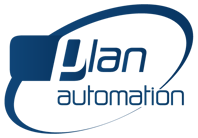MATERIAL HANDLING
Material handling covers a broad range of technologies used to manipulate, orient and transport containers and finished goods throughout the packaging operations.
CONVEYORS
Powered and gravity conveyors come in a very wide variety of designs and configurations to transport and orient bulk ingredients, products, containers, finished goods and cases to various packaging operations on the production line.
To learn more about conveyors Plan Automation can provide to you visit our partner site Storcan Conveyors.
UNSCRAMBLERS
For production lines where the primary packaging are rigid plastic containers (round, square, oval and oblique), a method of singulation and orientation is required to present the containers to the downstream filling operations (liquid or dry). A modern unscrambler has the containers loaded into the bulk hopper that through rotation creates centrifugal forces that feeds the containers into a pocket designed for the specific size of the container. Once in the pocket, a series of dynamic side belts transports the individual containers horizontally to an rotating wheel and hook assembly where the container is upended and transferred to the infeed conveyor upstream of the filling operation. If air rinsing is required to remove any foreign material from the container, this can be incorporated into the unscrambling operation.
To learn more about unscramblers Plan Automation can provide please visit our partner site New England Machinery.
RINSERS
For containers that require active sanitization, or that container higher amounts of foreign material contamination, a dedicated, stand-alone rinser is used. Available in either a linear or rotary configuration, these devices use either purified water or ionized air with vacuum to sanitize and remove the foreign material from the empty container prior to product filling.
To elarn more about rinsers Plan Automation can provide please visit our partner site Bevco.
ORIENTORS
For containers that have integrated handles, offset closure positions, or dedicated panels for labelling, container orientation is often required. Once the containers are singulated, they are indexed into the orientation device that uses either a vision or mechanical system to determine to correct container orientation. Once this has been accomplished, a mechanical or pneumatic clamping device rotates the container into the correct orientation and releases it onto the discharge conveyor for downstream packaging operations.
DENESTING
Many bakery, dairy and prepared foods products are packaged into rigid containers that nest into each other in bulk format. A denester provides a magazine for these bulk containers where individual containers are stripped from the bottom of the magazine and transferred individually using a vacuum or mechanical placer to the conveyor for product loading.
To learn more about denesting product Plan Automation can provide you visit our partner site Graphic Packaging.
DEPALLETIZING
For higher speed packaging operations the empty bulk containers (plastic, glass or metal cans) are delivered on pallets with multiple layers. Corrugated slip sheets are used as a stable surface for the containers between each layer. There are two separate methods of depalletizing these containers one layer at a time. A sweep style depalletizer employs a rigid sweep arm with side containment to index the entire layer of containers onto a wide, mat top plastic chain conveyor that transferred them to a lane combiner for singulation. As this type of depalletizer often have a high level discharge, a lowerator is used to transport the containers to grade level packaging operations.
The second method of depalletization is robotic. An end of arm tool using either mechanical, vacuum or magnetic clamping to remove the containers from the bulk pallet one layer at a time. The entire layer is then transferred to a wide mat top conveyor for singulation as described in the sweep style method above.
FRICTION FEEDING
Friction feeders are used to place coupons, instruction leaflets, credit cards and a variety of other products and materials into, or onto other products or carriers. A magazine is loaded with the material to be fed and an individual piece is stripped from the magazine and transferred to high speed compliance belts. The belts transport the piece to the discharge point where it is placed or inserted.
For more information on our friction feeding products visit our key partners site Thiele Technologies (Streamfeeder) here.

